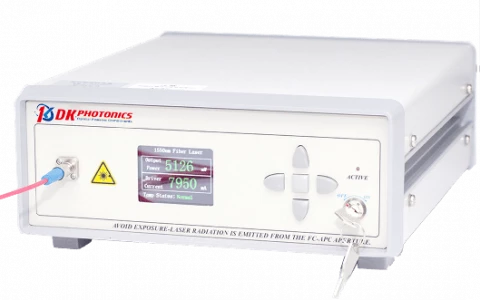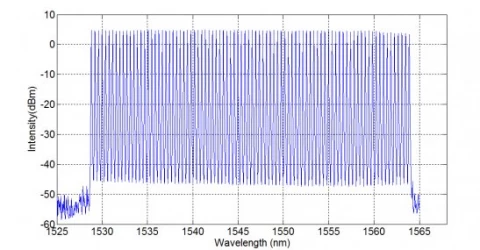Description
The C-band Tunable Fiber Laser 's wavelength tuning range covers the C-bandand achieves continuous laser output of up to 89 wavelengths (ITU-T standard wavelength, wavelength separation 50 GHz). It integrates dual FP cavity tuning etalon and high gain chip, featuring high output optical power, narrow linewidth and high wavelength accuracy. It is equipped with a dedicated drive control circuit, high-definition color LCD screen, and optional control keyboard and PC software. Users can easily adjust the wavelength accurately. It can be used in DWDM system development, fiber laser, fiber link, optical device testing and other fields.
C-band Tunable Fiber Laser
Specifications
| Bandwidth: | 35 nm |
|---|---|
| Center Wavelength: | 1546 nm |
| Output Power: | 20 mW |
| Polarization: | Not Specified |
| Frequency Tuning Range: | 191.7~196.1 THz |
| Channel Spacing: | 50 GHz |
| Side Mode Suppression Ratio: | >50 dB |
| Number Of Wavelength Channels: | 89 |
Features
- Up to 89 wavelengths
- High power stability
- High Side mode suppression ratio
- Wide Wavelength Tuning Range: Covers 89 ITU-T standard channels across the C-band (1528–1563 nm) with 50 GHz spacing.
- High Output Power: Available output levels ranging from 10 mW to 500 mW, catering to various application needs.
- Exceptional Spectral Purity: Side Mode Suppression Ratio (SMSR) exceeding 50 dB ensures clean signal output.
- Stable Performance: Offers high power stability and spectral flatness, crucial for sensitive measurements.
- User-Friendly Interface: Equipped with a high-definition LCD display and optional PC software for intuitive control and monitoring.
- Flexible Integration: Supports both standalone operation and remote control via communication interfaces.
Applications
- Dense Wavelength Division Multiplexing (DWDM): Ideal for system development and testing, enabling precise channel selection and management.
- Optical Fiber Sensing: Suitable for applications like Fiber Bragg Grating (FBG) sensing, structural health monitoring, and distributed sensing systems.
- Passive Optical Component Testing: Facilitates characterization and evaluation of components such as filters, multiplexers, and isolators.
- Fiber Optic Communication Links: Useful in simulating and testing various communication scenarios and link configurations.
- Research and Development: Supports experimental setups in photonics research, including spectroscopy and optical coherence tomography.
Frequently Asked Questions
What is the wavelength tuning range of the C-band Tunable Fiber Laser?
The wavelength tuning range of the C-band Tunable Fiber Laser covers the C-band and achieves continuous laser output of up to 89 wavelengths (ITU-T standard wavelength, wavelength separation 50 GHz).
What are the key features of the C-band Tunable Fiber Laser?
The key features of the C-band Tunable Fiber Laser include up to 89 wavelengths, high power stability, and high side mode suppression ratio.
What applications is the C-band Tunable Fiber Laser suitable for?
The C-band Tunable Fiber Laser is suitable for applications such as DWDM systems, optical fiber links, and passive optical component testing.
What are the performance specifications of the C-band Tunable Fiber Laser?
The performance specifications of the C-band Tunable Fiber Laser include a wavelength tuning range of 1528.77~1563.86 nm, a channel spacing of 50 GHz, and a side mode suppression ratio of over 50 dB.
What are the dimensions and operating conditions of the C-band Tunable Fiber Laser?
The C-band Tunable Fiber Laser has dimensions of 260(W)×280(D)×120(H)mm and operates in a temperature range of -5~+55°C and a humidity range of 0~70%.
Is the laser output polarization-maintaining?
The standard configuration provides single-mode fiber output. However, a polarization-maintaining (PM) fiber output is available upon request to meet specific application requirements.
Can the laser be controlled remotely?
Yes, the laser supports remote control via a communication interface and optional PC software, allowing users to monitor and adjust settings conveniently.
Similar Products
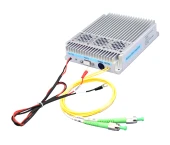
1780~2000nm ASE Broadband Light Source
Shenzhen Box Optronics Technology Co.,Ltd.
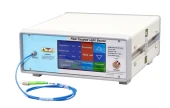
1567~1603 nm L-band ASE Broadband Light Source
Shenzhen Box Optronics Technology Co.,Ltd.
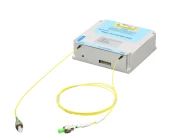
1528~1563nm C-band ASE Broadband Light Source
Shenzhen Box Optronics Technology Co.,Ltd.
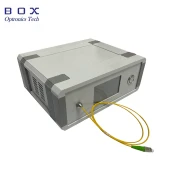
840nm SLD Broadband Light Source
Shenzhen Box Optronics Technology Co.,Ltd.
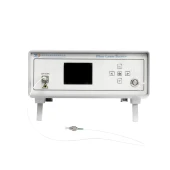
ASE Broadband Light Source C+L Band
Sichuan Ziguan Photonics Technology co.,Ltd
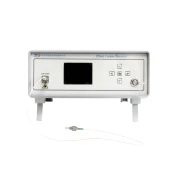
1060nm ASE Broadband Light Source – Available in 10 mW, 20 mW, 100 mW, and 200 mW Output Options
Sichuan Ziguan Photonics Technology co.,Ltd
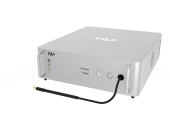
Horizon - FYLA Fiber Laser
FYLA LASER SL
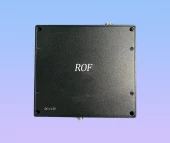
ROF directly modulated laser DML Laser Module ASE Laser SLD Laser Light Source
Beijing Rofea Optoelectronics Co,. Ltd.
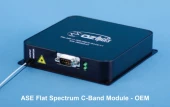
ASE Flat Spectrum C-Band Module - OEM
OZ Optics
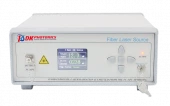
C, L band ASE Broadband Light Source
DK Photonics
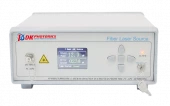
L-Band Tunable Fiber Laser
DK Photonics
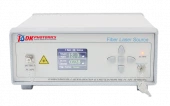
L Band ASE Broadband Light Source
DK Photonics
Thank You!
Your inquiry has been received.
Create an account by adding a password
Why create an account?
- Auto-complete inquiry forms
- View and manage all your past messages
- Save products to your favorites
- Close your account anytime — no hassle
